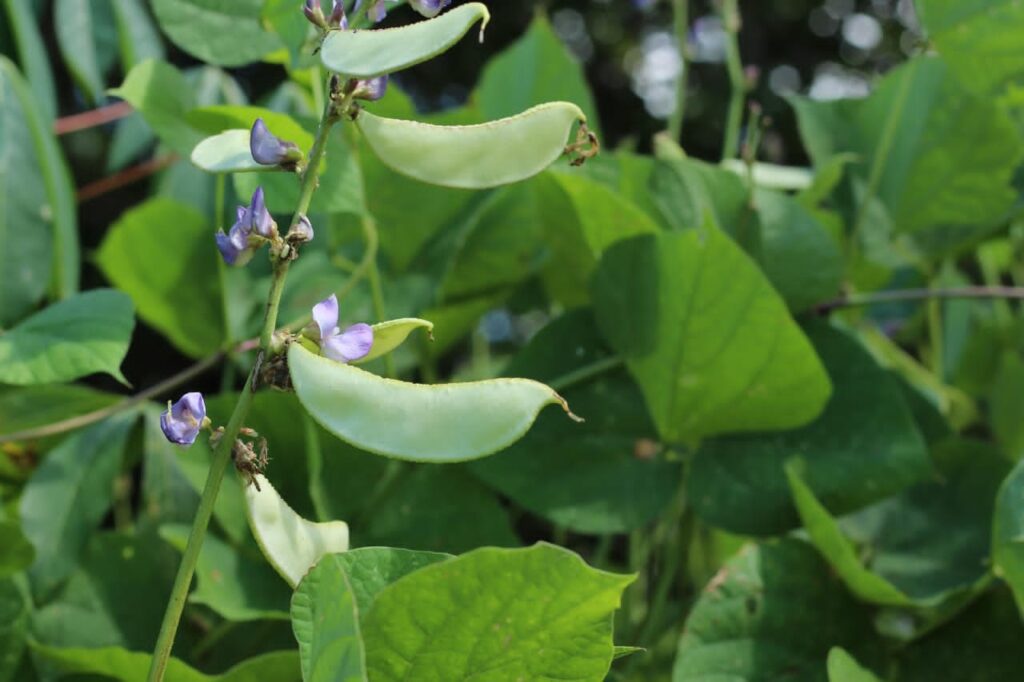By Adewale Kupoluyi
A new bean genome has been developed with potential to boost food security and resilience in drought-prone regions and this has opened way for genetic improvements of native legume to promote widespread cultivation that could yield nutritional and economic benefits. An international team of researchers has fully sequenced the genome of a climate resilient bean that could bolster food security in drought-prone regions. The sequencing of the hyacinth bean or ‘lablab bean’ (Lablab purpureus) paves the way for wider cultivation of the crop by bringing nutritional and economic benefits, as well as much-needed diversity to the global food system.
According to the Specialist, Awareness and Advocacy, International Livestock Research Institute (ILRI), David Aronson, the plant is native to Africa and is cultivated throughout the tropics by producing highly nutritious beans, which are used for food and livestock feed. It is extremely drought-resilient and thrives in a range of environments and conditions, contributing to food and economic security, and improving soil fertility by fixing nitrogen. Lablab is also used medicinally in some areas and contains bioactive compounds with pharmacological potential. The plant’s adaptability suggests high genetic diversity, which means it’s possible to select different adaptive genotypes for different environments and climatic challenges.
Lablab’s potential for genetic improvement to boost its productivity and facilitate wider cultivation, especially in drought-prone areas, has yet to be fully exploited. “When it comes to valuing a crop, people often focus on its global market value in US dollars”, said the Programme Leader for Feed and Forage Development at the ILRI, based in Kenya, Chris Jones, and one of the lead authors of a new study in Nature Communications that shares the findings of the work. “However, for farmers who struggle to produce enough food, the value of a crop like lablab is incredibly high. Although, it may be cultivated on a smaller scale compared to major crops, its impact on food security can be significant, and we need to recognise that”, he added.
The researchers have identified the genomic location of important agronomic traits, relate to yield and seed-plant size. They documented the organisation of the trypsin inhibitor genes, which inhibit a key enzyme in the digestion process in humans. This provides opportunities for targeted breeding to reduce these anti-nutritional properties. They also tracked the history of lablab’s domestication, confirming that this occurred in a parallel and in two different places. Another lead author of the study and Associate Professor at the University of Southampton, Mark Chapman, said: “This is an exciting finding, and it opens the door to studying whether agronomic traits can evolve more than once using the same genes, or if different, pathways can evolve to give the same outcome. Compiled, this information offers a valuable resource for genetic improvement”.
The lablab bean is one of a long list of ‘orphan crops’, indigenous species that play an important role in local nutrition and livelihoods, but that receive little attention from breeders and researchers. The three major crops that currently provide over 40 per cent of global calorie intake include wheat, rice, and corn, which receive the bulk of breeding and crop improvement efforts. With so little diversity in crop cultivation, the global food system is vulnerable to environmental and social instabilities. Underutilised crops like lablab hold the key to diversified and climate-resilient food systems and genome-assisted breeding, which is a promising strategy to improve their productivity and adoption.
A lead author in the study from the International Livestock Research Institute, and a visiting scientist at the John Innes Centre in the United Kingdom, Oluwaseyi Shorinola, said, “The first green revolution was achieved with major crops like wheat and rice. Orphan crops like lablab could pave the way for the next green revolution. The research process itself was ground-breaking, not only for its inclusivity, but also for its leadership by African scientists. “Although many African indigenous crops have been sequenced in the past few years, in most of that work African scientists have been underrepresented, and when we’ve been involved we have been in the back seat”, said another co-author of the study and a scientist at ILRI in Ethiopia, Meki Shehabu.
This project special is that it is led by African scientists in collaboration with scientists from international institutes and to forge ahead, the project had to overcome contextual constraints such as the continent’s relative lack of sequencing facilities and high-performance computing infrastructure, as well as the bioinformatics capacity required. The researchers were able to address these challenges by using new low-cost portable sequencing platforms, carrying out in-depth capacity building such as Africa-based eight-month residential bioinformatics training, and working carefully to facilitate equitable international collaboration. Looking forward, the team anticipates that the resource would inspire genetic improvement work on lablab, and other underutilised indigenous crops with the aim of increasing food and feed availability on the African continent and beyond.



